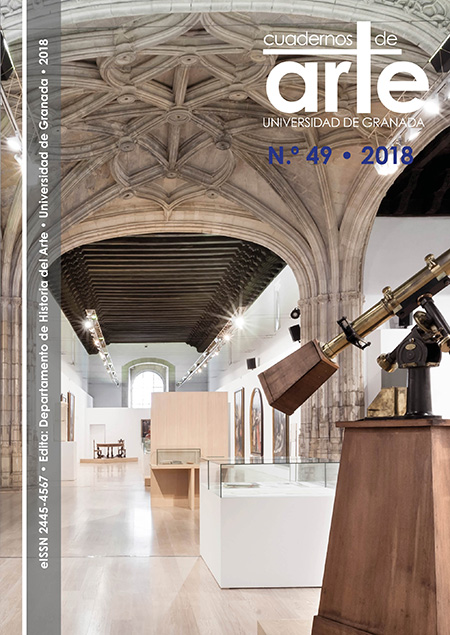Helmut Newton and the mannequin: the ambiguity of the artificial
DOI:
https://doi.org/10.30827/caug.v49i0.7778Keywords:
photography, mannequin, Helmut Newton, Rootstein, HindsgaulAbstract
Throughout his career, the photographer Helmut Newton has displayed a fascination for mannequins, due to this inanimate being´s lifelike appearance in photographic work. Combining a personal philosophical vision, Newton, by way of deliberate parallelism, developed the personification of the mannequin and the archetype of the human being. In this regard the German photographer used to his advantage the pages of Vogue magazine and his own catalogues. In almost impossible scenarios or in deliberately sexualized poses, he photographed mannequins wearing the clothes of the great fashion designers, employing the hyper-realistic mannequins of the Rootstein and Hindsgaul firms, who, from the artist’s perspective, crossed the limit of their real purpose, manifesting their subversive nature instead.
Downloads
References
Caputi, J. (2004). Goddesses and Monsters: Women, Myth, Power, and Popular Culture. Madison: University of Wisconsin Press.
Jarque, F. (2015). Cómo piensan los artistas. Entrevistas. México D.F.: Fondo de Cultura Económica.
Newton, H. (2000). Work. Colonia: Taschen.
Newton, H. (2005). Autobiografía. Barcelona: RM Verlag.
Newton, H. (2006). Helmut Newton (Introducción de K. Lagerfeld). Barcelona: Lunwerg.
Newton, H. (2009). Helmut Newton (Ed. J. Newton). Colonia: Taschen.
Schwartz, H. (1998). La cultura de la copia. Parecidos sorprendentes, facsímiles insólitos. Madrid: Cátedra.
Tungate, M. (2012). Fashion Brands: Branding Style from Armani to Zara. Londres: Kogan Page.
Downloads
Published
How to Cite
Issue
Section
License
Los autores que publican en esta revista están de acuerdo con los siguientes términos:- Los autores conservan los derechos de autor y garantizan a la revista el derecho de ser la primera publicación del trabajo al igual que ser licenciado bajo una licencia Creative Commons que permite a otros compartir el trabajo con un reconocimiento de la autoría del trabajo y la cita de la fuente original, con un uso no comercial y siempre que no se hagan obras derivadas.
- Los autores pueden establecer por separado acuerdos adicionales para la distribución no exclusiva de la versión de la obra publicada en la revista (por ejemplo, situarlo en un repositorio institucional o publicarlo en un libro), con un reconocimiento de su publicación inicial en esta revista.
- Se permite y se anima a los autores a difundir sus trabajos electrónicamente (por ejemplo, en repositorios institucionales o en su propio sitio web) antes y durante el proceso de envío, ya que puede dar lugar a intercambios productivos, así como a una citación más temprana y mayor de los trabajos publicados (Véase The Effect of Open Access) (en inglés).






 ISSN-e: 2445-4567
ISSN-e: 2445-4567








